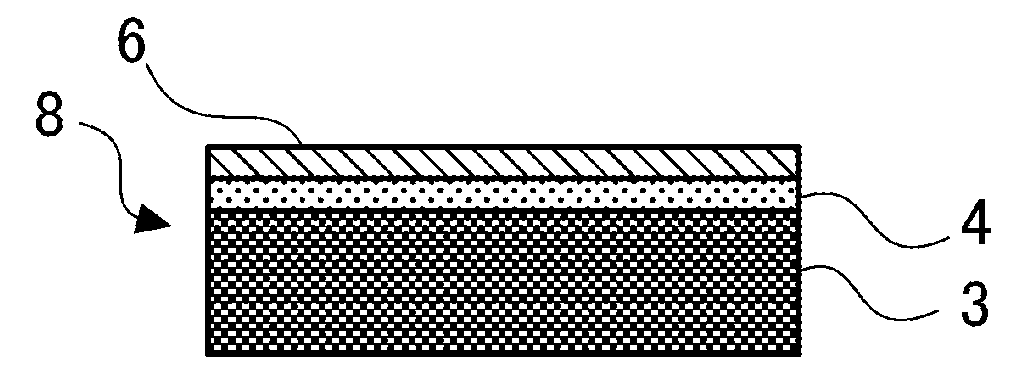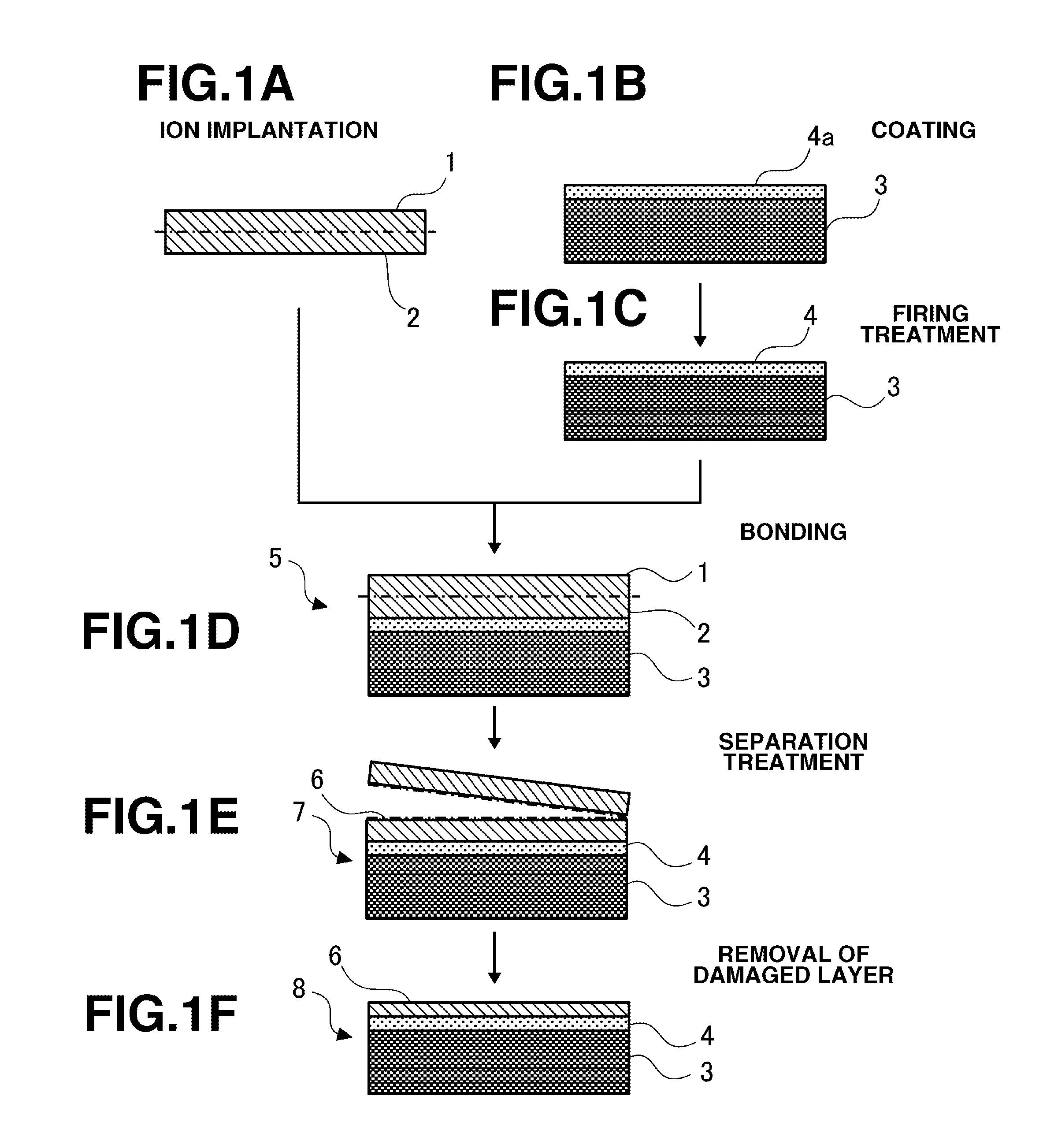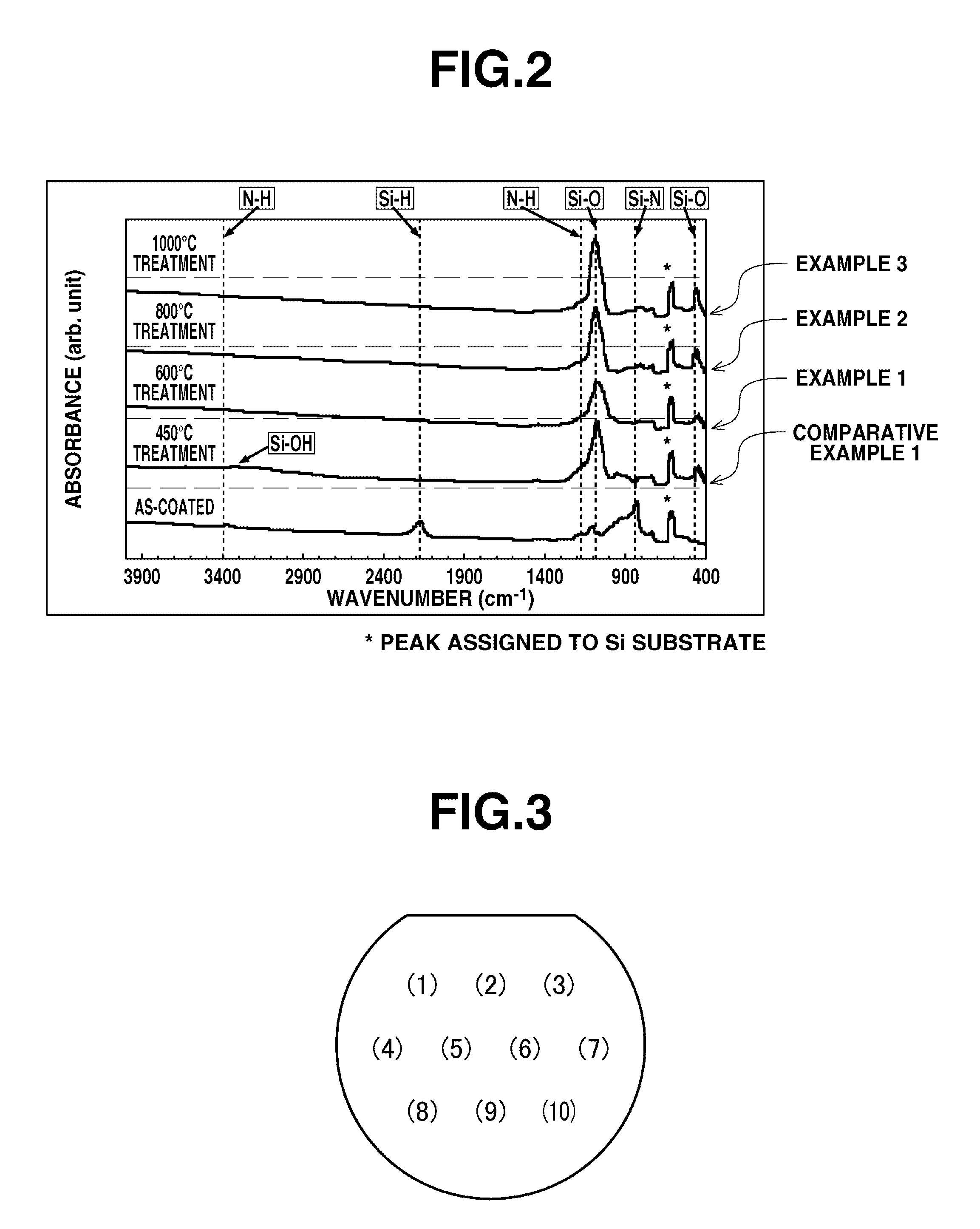Composite substrate manufacturing method, and composite substrate
a manufacturing method and composite substrate technology, applied in the direction of basic electric elements, electrical apparatus, semiconductor devices, etc., can solve the problems of difficult bonding of surface to bondable level, high cost of single-crystal materials, and defect in semiconductor materials, so as to reduce surface roughness, good insulating properties, and easy bonding
- Summary
- Abstract
- Description
- Claims
- Application Information
AI Technical Summary
Benefits of technology
Problems solved by technology
Method used
Image
Examples
example 1
[0064]A test sample was prepared and evaluated by the following procedure.
[0065]First, a film was formed by conversion from perhydropolysilazane to SiO2 on a support substrate in the form of Si wafer. Specifically, 2 mL of a solution containing 20 wt % perhydropolysilazane in di-n-butyl ether solvent (Tresmile, Product No. ANN120-20 by Sanwa Kagaku Corp.) was spin coated onto a Si wafer with an outer diameter of 150 mm, and then heated at 150° C. for 3 minutes to remove the solvent. Then firing treatment was carried out by heating in air at 600° C. for 3 minutes, for converting the coating to a SiO2 film. The film at the end of firing treatment had a thickness of 200 nm. A change in quality of the film before and after the firing treatment was confirmed by IR absorption spectroscopy, and the SiO2 film surface after the firing treatment was measured for surface roughness (Rms) under an atomic force microscope (AFM). Further, the SiO2 film was evaluated for dielectric strength at 10 p...
example 2
[0068]The same procedure as in Example 1 was repeated except that the firing temperature was changed to 800° C., thereby transferring a Si single crystal thin film to the support substrate. It was evaluated as in Example 1.
example 3
[0069]The same procedure as in Example 1 was repeated except that the firing temperature was changed to 1,000° C., thereby transferring a Si single crystal thin film to the support substrate. It was evaluated as in Example 1.
PUM
| Property | Measurement | Unit |
|---|---|---|
| height | aaaaa | aaaaa |
| temperature | aaaaa | aaaaa |
| resistivity | aaaaa | aaaaa |
Abstract
Description
Claims
Application Information
 Login to View More
Login to View More - R&D
- Intellectual Property
- Life Sciences
- Materials
- Tech Scout
- Unparalleled Data Quality
- Higher Quality Content
- 60% Fewer Hallucinations
Browse by: Latest US Patents, China's latest patents, Technical Efficacy Thesaurus, Application Domain, Technology Topic, Popular Technical Reports.
© 2025 PatSnap. All rights reserved.Legal|Privacy policy|Modern Slavery Act Transparency Statement|Sitemap|About US| Contact US: help@patsnap.com



